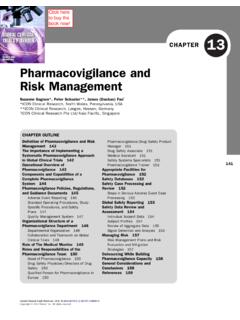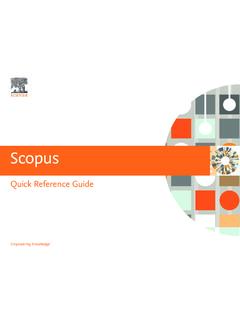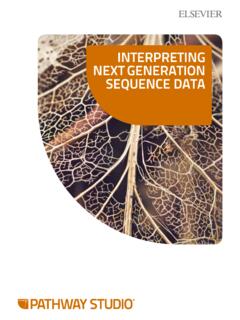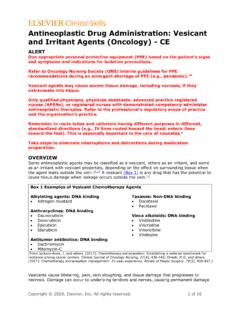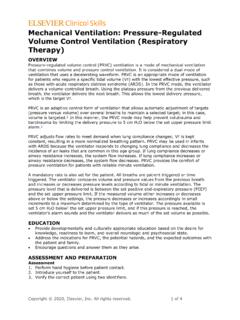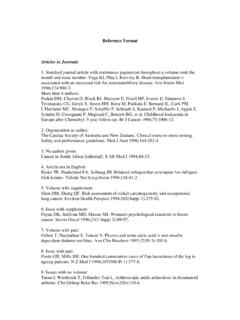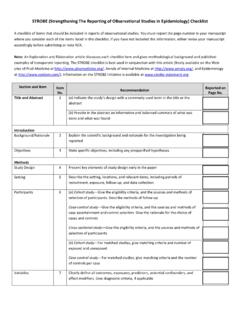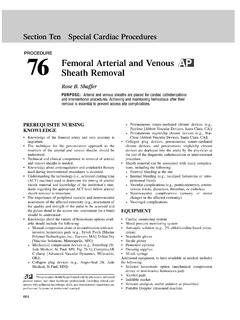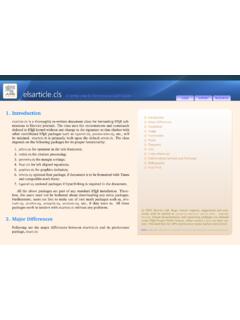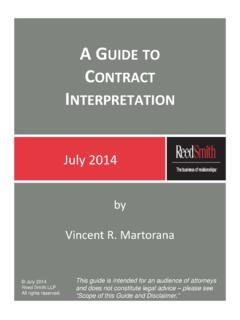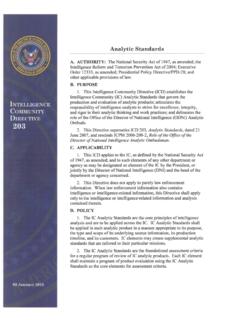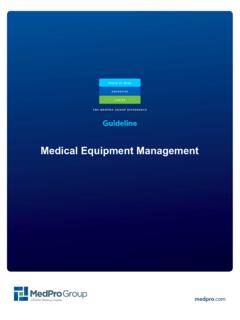Transcription of Successful grant writing - Elsevier
1 Critical stages of grant tips and tricksTime and effort for a typical grantAnd grant writingGetting it right Generate an idea Why is this interesting and who cares? Who will benefit from your work? How novel is this idea? Why am I the best person to do this? Can I realistically achieve what I claim?Find a matching funding opportunity Look at who funds similar research Be aware: different agencies support different types of projects Scan for available calls Be willing to cast a wider net Think outside of the box.
2 Keep your mind openBackground research Understand the different agencies and their styles Talk to the Program Manager they are used to cold calls! Do the literature search, it can save you weeks of writing ! Assume the panel members know nothing about your work, buteverything about your competitors Don t expect the panel members to be experts in your field, putyour idea into contextWrite the technical portion What problem are you addressing? Why hasn t it been solved yet? Why do you think you will succeed? What is your hypothesis?
3 What is your work plan and what are your milestones? How will you measure success?Check the administrative parts Read the call again and again and Calls are usually specific about the formats they require Terms like required and must include should be adhered to Work on your budgets and other documents in advance beprepared If you need external letters, give people enough time to get themto youSubmit and forget about it Allow enough time to upload the files and check pdfs for readabilityand errors Many agencies systems get very busy during submission times accept and prepare for this Once submitted, forget about the proposal until you hear from thereview panel Make sure that the agency communications don t get filtered intoyour spam folder Many agencies will return detailed reviews.
4 Use the review to reviseand resubmit your grantTime keeping: Be realistic about the time it takes to write the grant - grants are like an ideal gas, they fill all the space available to your style: Do not use tiny fonts, even if the call doesn t have a lower limit. 11 point is probably as low as you can go. Leave ample margins (3/4 in is pushing it). Avoid passive voice and tell a your audience: Find out more about yourfunding agency and use it to your advantage emphasize basic science for NSF, healthcare for NIH or technology for DARPA and network: grant calls include the contact information for a reason.
5 Call the Program Manager as they seldom can answer all their emails. Prepare all your questions in but be warned: If you reuse parts of older grants (everybody does it) watch for the items specific to older grants in those texts - nothing reveals a quick hack job matters: When it comes to budget be frugal but realistic. The average size of the award specified in the call is a good indication of the scope of work the Program Manager has in original! Try to be original and propose ideas that make sense, not just the boilerplate .
6 Reviewers have read the boilerplate many times before. But don t forget to explain things that look unusual. Always assume any problems were your fault, notthe reviewer If the reviewer has misunderstood something,then you did not explain it clearly enough Make sure you invest considerable work andeffort in any revision reviewers will likely dothe finally good luck!Content produced by: Aleksandr Noy, Lawrence Livermore National Laboratory Member of Editorial Advisory Panel, Materials Today & Natasha Noy from Stanford University, USA.
7 In association with Elsevier & Materials good proper manuscript languageHow to Get PublishedWhat distinguishes a good manuscript from a bad one?..is in scopeInvestigate all candidate journals and find out about the: Aims and scope Accepted types of articles Readership Current hot topics by going through the abstracts of recent to publication ethics Avoid plagiarism of others work Avoid multiple publication of the same work, never submit your manuscript to more than one journal at a time Cite and acknowledge others work appropriately Only list co-authors who made major the Guide for Authors Stick to the Guide for Authors in your manuscript.
8 Editors do not like wasting time on poorly prepared manuscriptsYou can find the Guide for Authors on the journal s homepage on Illustrations are critical, Figures and tables are the most efficient way to present results Results are the driving force of the publication One picture is worth a thousand words. Sue Hanauer (1968) Captions and legends must be detailed enough to make figures and tables self-explanatory No duplication of results described in text or other Illustrations Ask an experienced colleague or use a language editing service like to improve your paper before you submit it Poor English makes it difficult for the editor and reviewers to understand your work and might lead to rejection of your paper Be alert to common errors.
9 N Sentence construction n Incorrect tenses n Inaccurate grammar n Mixing languages English language should be used throughout the manuscript, including figures, charts, graphs and photos Do your findings advance understanding in a specific research field? Is your work of interest to the journal s audience? Is your manuscript structured properly? Are your conclusions justified by your results? Are your references international/accessible enough? Did you format your figures and tables properly? Did you correct all grammatical and spelling mistakes?
10 Do not correct language, this is the author s 35% of all submitted manuscripts are rejected before peer review. Make sure you revise before you StructureAre you ready to submit?Make sure you are equipped!Discover our free resourcesVisit PREPARATIONWRITING FOR RESEARCH PUBLICATIONPROCESSNAVIGATING PEER REVIEWCOMMUNICATING YOUR RESEARCHWhat does it mean to be an author?Four criteria to be met to attain author creditThree types of unacceptable authorshipKey author responsibilitiesWhat is plagiarism and how is it detected?
